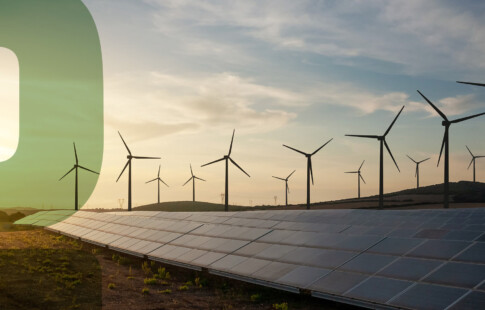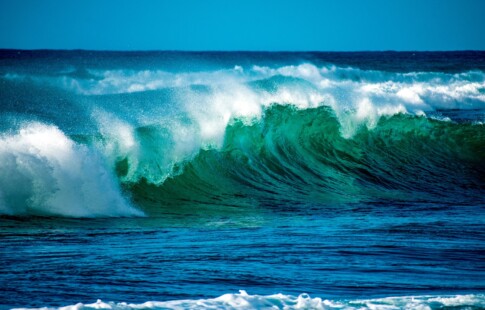
How Geothermal Energy Is Produced
We are reader-supported. When you buy through links on our site, we may earn affiliate commission.
As we head further into the 21st century, the problems generated by fossil fuels and waste are becoming more pronounced. Experts claim that fossil fuel emissions will peak in 2025, producing 39 gigatons of CO2 emissions. However, the U.S. and other countries are already taking steps to reduce their carbon footprint by promoting renewable energy sources such as wind, solar and hydroelectric energy. Another one of those renewable sources is geothermal energy. So, how is geothermal energy produced?
What Is Geothermal Energy?
Geothermal energy harnesses the heat produced by our planet to both acts as a source of warmth and to produce electricity. The core of the Earth continuously produces heat at temperatures up to 9,000 degrees Fahrenheit. This heat radiates from the core into the rest of the planet, warming rocks, water and other geological elements.
Volcanoes, geysers, hot springs and steam vents are all caused by heat rising to the surface and escaping. However, most of the heat remains in the mantle layer, collecting in pockets of intense heat. This heat is most used to harness geothermal energy.
Benefits and Limitations Of Geothermal Energy
Geothermal energy has many benefits, but it also has a few drawbacks. While carbon dioxide is not generated when producing geothermal power, most methods emit minimal greenhouse gasses. This is because geothermal liquids’ steam carries pollutants that form naturally underground. However, this amount of pollution is still ten times less than what coal and petroleum plants produce.
One of the main disadvantages of geothermal power plants is that the locations for harnessing a meaningful amount of underground liquid are limited. The ideal area for producing geothermal energy is above an area near the tectonic plate boundary. Finding a location still close enough to civilization is very challenging.
However, geothermal energy is an enormous boon for those countries with the right geographic location. Geothermal energy is more reliable than other renewable energy sources, such as solar and wind. The energy output of solar and wind energy can vary depending on factors like the weather — but geothermal energy’s output is constant and not affected by natural variables.
How To Harness Geothermal Energy
The U.S. is the largest generator of geothermal energy in the world. Factories across the U.S. can generate more than 16 billion kilowatthours of energy.
Geothermal power plants draw fluids from underground to produce steam. This steam is sent through turbines and the operation of these turbines produces electricity. Unlike coal or nuclear power, geothermal energy produces little to no waste depending on the method used. There are typically three types of geothermal power plants.
Dry Steam Power Plant
Dry steam power plants utilize hydrothermal fluids that are partially steam — an unusual natural phenomenon. Steam is drawn through a pipe into a turbine, which drives a generator that produces electricity as the turbine spins. After passing through the turbine, the steam condenses back into liquid water and is injected back into the reservoir to be used again.
This type of power plant is the oldest kind, having been in use since its discovery in 1904. The greatest source of steam is geysers – naturally forming pockets of pressurized boiling water that violently shoot up to the surface. The temperature of these pockets of water averages about 212 degrees Fahrenheit, perfect for use in geothermal power plants.
Flash Steam Power Plant
Flash steam power plants are the most common type of geothermal power plants in operation. Instead of relying on hydrothermal fluids, water at temperatures greater than 260 degrees Fahrenheit is pumped underground to the Earth’s surface. This water travels through a high-pressure pipe, turning into steam when it reaches its destination. This process is called “flashing” because of the speed at which the water turns into steam.
The newly formed steam is fed through a turbine-like dry steam power plants. Afterward, this steam is fed back into another pipe that sends it back down to the reservoir. The “flashing” process is reversed — as the steam travels back through the pipe, it becomes water again.
Binary-Cycle Power Plant
The latest type of geothermal power plant to be developed — binary-cycle power plants are designed to use lower-temperature geothermal resources. This allows them to be deployed in more locations for electricity production.
Binary-cycle power plants achieve this by utilizing a type of fluid named “binary fluid.” This fluid has a lower boiling point than water. The geothermal fluid passes through a heat exchanger that causes the binary fluid to boil and turn into steam. This steam is then used to power the turbine and generate electricity.
Utilizing binary fluids makes a power plant of this type more flexible and the only type of geothermal plant that produces no harmful emissions whatsoever — making geothermal energy generation completely clean.
Geothermal Heat Pumps
Geothermal heat pumps are a type of residential home heating system. As the name suggests, this system uses local geothermal liquids to provide heating and electricity to homes. It achieves this through a “ground loop” system. Underground fluids are circulated through a pipe system underground, mixing with a water solution in the process.
Once the liquid is hot enough, it is sent to the surface, where a heat pump gathers the thermal energy and transfers it into the home’s ductwork system as hot air. Geothermal heat pumps are very efficient — utilized by commercial and residential properties. Unlike solar energy, property owners have more control over the output of a geothermal system.
However, as with geothermal power plants, geothermal heat pumps might not be viable depending on the location.
How Geothermal Energy Is Produced
The Earth provides humans with everything they need to create renewable energy with the technology we’ve developed. In the 21st century, people are becoming more aware that there is a need for as many renewable energy resources as possible. While not perfect, continuing to develop geothermal energy alongside other renewables can lead to greater energy efficiency and far fewer pollutants in the near future.
Share on
Like what you read? Join other Environment.co readers!
Get the latest updates on our planet by subscribing to the Environment.co newsletter!
About the author

Steve Russell
Steve is the Managing Editor of Environment.co and regularly contributes articles related to wildlife, biodiversity, and recycling. His passions include wildlife photography and bird watching.





